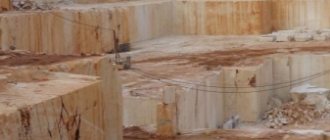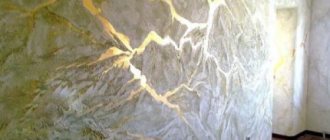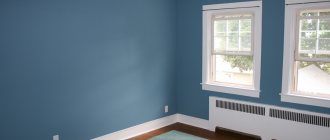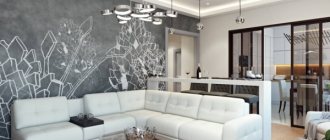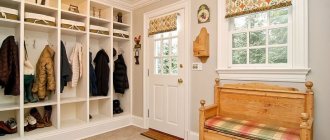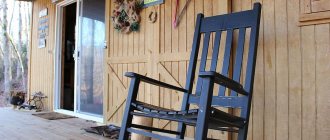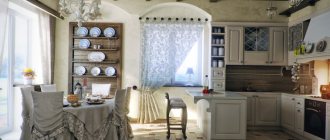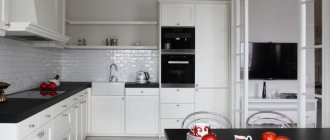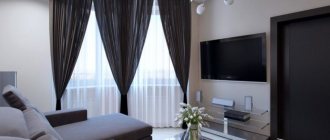The face of any house is its facade . Today, special attention is paid to facade design. Designers and architects around the world use various decorative materials to decorate the facade of their projects: from natural to artificial. One of the most popular is facade stucco - a wonderful and simple way to individualize your home , turn it from an ordinary boring building into a small palace, castle or fortress.
Properly executed decoration with decorative facade stucco looks great on any building
What is façade stucco?
Facade stucco is actively used for the decorative design of various buildings: from private cottages to administrative, city, shopping, facilities and even business centers. Attractive appearance, original design, unusual design - this is what this decorative product gives to those who decide to use it.
Modern stucco meets all established quality standards that apply to materials of this kind.
In addition to decorative qualities, it has a number of undoubted advantages. Among them:
- Excellent thermal insulation;
- Neutralization of cold bridges;
- Mechanical protection of corners from chips and climatic influences;
- Masking qualities (you can hide various electrical wires and pipes).
In addition, with its help you can easily hide visible building defects, architectural or construction flaws.
What materials are they made from?
At its core, façade stucco is embossed decoration on the outside of buildings. Manufactured from gypsum, concrete, polyurethane, etc. Let's look at the most popular variations in more detail.
Concrete stucco
Architectural concrete is used to make structures of any shape.
Concrete stucco or architectural concrete is a material that will last for centuries. All builders and architects know about its incredible strength and durability. That is why concrete stucco is actively used to decorate various facades. As a rule, lightweight concrete stucco, based on polystyrene concrete, is used to decorate the facade of buildings. Such products do not create a large load on the foundation of the building, but have all the characteristic performance qualities.
The table below presents the main disadvantages and advantages of concrete stucco.
| Advantages | Flaws |
|
|
Fiberglass molding
Fiberglass House Facade
Fiberglass or fiberglass stucco is also widely used in modern construction. The main highlight is the unusual composition, where in addition to natural components there are also synthetic ones (which improves performance characteristics and makes it more cost-effective to use).
The undoubted advantages include:
- flexibility;
- ease;
- ease of installation;
- beautiful appearance;
- possibility of installation on objects of any size: from old historical buildings to modern high-rise buildings;
- does not require maintenance or reconstruction work;
- high light transmittance (the product is as close to the glass as possible);
- environmental friendliness and non-flammability.
The disadvantages include fragility, lack of resistance to mechanical damage, and the need to apply an additional protective layer. The production of fiberglass moldings is done in many ways, including vacuum infusion, winding, hand molding, spraying, autoclave molding, pressing, etc.
Gypsum decor for facade
Facade gypsum stucco molding in the Greek style
Gypsum decor is often . Thanks to its many unique qualities, this material is actively used not only in the field of construction and architecture, but has also found wide application in medicine, interior decoration, landscape design, and much more. etc.
The main pros and cons of gypsum stucco for facades are listed in the table below.
| Advantages | Flaws |
|
|
Stucco molding from polystyrene foam, as well as from foamed polyurethane
An example of a façade decorated with stucco molding made from polystyrene foam
Just a few decades ago, an amazing building material appeared on the market, which immediately appealed to many decorators. Polyurethane stucco has a number of unique qualities . Firstly, it is a very light material that is easy and pleasant to work with. It does not attract dust and also does not absorb any odors. Secondly, polyurethane is resistant to various mechanical damage. Thirdly, the polyurethane product does not deteriorate under the influence of fungi and bacteria. Fourthly, it is ideal for decorating the facade of “light”, small buildings. And the fifth, but not the last plus is low cost (in relation to gypsum, polyurethane is a more budget option).
But, despite the impressive list of advantages, polyurethane stucco has significant disadvantages:
- porous structure;
- grainy surface;
- the difficulty of making stucco molding of the correct shape (one mistake, and the polyurethane foam will shrink);
- installation is carried out using a special glue, which significantly reduces the strength and durability of the architectural structure.
The conclusion is this: for a small budget and low-rise buildings, polyurethane stucco is ideal. For larger objects, the best option would be gypsum stucco.
Let's start production
To start making stucco from gypsum, you need to prepare everything you need:
At the first stage, making stucco moldings from gypsum with your own hands involves preparing the mold.
Its surface should be thoroughly cleaned of dust. Using a soft hair brush, apply silicone grease on top so that the frozen product can be easily separated from the surface.
You need to coat it especially carefully, since gypsum can intertwine well with silicone. It will become extremely difficult to remove the product.
Any incorrect movement will damage not only it, but also the form itself.
Photo:
In order for your own gypsum stucco molding to acquire the desired look, you need to properly prepare the solution.
You can use any gypsum sold in construction stores, but for large-sized products a mixture of grade G-4 and higher is recommended.
Gypsum is mixed with water. To speed up hardening, add warm water.
But for large molds, it is necessary to fill with chilled water, since you may not have time to release air from the product by vibrating the surface.
It is necessary to add water-based glue to the prepared solution (PVA is recommended).
It is needed so that the stucco molding made from gypsum with your own hands quickly gains strength, cracks do not form on the product, and it does not dry out.
To improve strength, you can add a little cement to the solution.
Stirring is carried out using a mixer - a special attachment for a drill. The gypsum solution is mixed in a small amount, sufficient for one working cycle.
Continuing the production of gypsum stucco, it is time to fill the greased molds. The mixture will quickly begin to thicken, so you will have to work quickly.
It is necessary to remove bubbles from the solution using one of two methods:
- Evenly distribute the plaster with a brush;
- Vibrating.
The most effective is the second method, but you must have the appropriate equipment on hand.
If this stage is neglected, over time moisture will accumulate inside the remaining cavities and the product will collapse.
Video:
Having completely filled the mold, the surface is leveled with a spatula.
If you have before your eyes a photo of gypsum stucco in the interior, you can compare the result obtained with the desired one.
You may want to make some modifications of your own.
Main types of facade stucco molding
Even an ordinary building decorated with facade stucco acquires an exclusive, attractive appearance. Today, the following types of stucco for the facade are distinguished:
- pilasters;
- columns;
- arches;
- moldings;
- cornices;
- bas-reliefs;
- decorative panel;
- handrails;
- balustrades, etc.
The choice of facade stucco molding is huge
and this list is systematically updated with new terms and varieties. Pilasters and columns are often used to decorate entrance areas. The main condition is that the products must rest against the surface (they are mounted in a suspended state extremely rarely).
Attention! Installation of columns and pilasters should be carried out exclusively under the supervision of professional builders.
Arches, moldings and cornices are necessary to decorate window and door openings. Structures can have different shapes and designs. Installation of moldings and cornices does not require special power costs and therefore can be carried out independently. But to install the arch, you need to invite a specialist.
Bas-relief is a type of sculptural convex relief. Its peculiarity is that the image protrudes above the background plane by no more than ½ of the total volume. As an independent architectural decoration, it can be used to decorate pylons, walls, pediments, friezes, metopes, vaults and capitals. Stucco balustrades and handrails are used as fencing for balconies, bridges, and central entrance doors. As a rule, the most durable materials are used in the manufacture of balustrades: concrete or gypsum.
Main entrance and staircase with balustrade
Types of stucco
There are many types of decor made from this material, let’s look at the main and most common ones:
- Skirting - covers the joints between the floor covering and the wall. Often, skirting boards are chosen in accordance with the color scheme of the room;
- Cornices are elements of various sizes that span the angle formed by the wall and ceiling. Necessary for room decoration;
- Casting - a strip with a three-dimensional pattern. It is used to cover the seams of incompatible materials, to create arches, frames, and cornices.
- The bas-relief is a sculptural composition that is located above the plane.
- Rosette - stucco molding that decorates the area where the lamp is mounted;
- Bracket - The supporting part of the protruding area. Can be decorated with curls and curls;
- Column - a design element consists of three parts: the base, the column itself, the header;
- Niche - installed on the wall, needed to install a statue and other objects.
There are also various other cutters, corners, pediments, central parts, patterns, curls, and individual ornamental details.
Don't order STUCKING until you see THIS! In what interiors is stucco molding appropriate? (1 video)
Related article: Storage Secrets: How to Organize School Textbooks and Supplies?
Decorative stucco molding in a modern interior (8 photos)
Which material is better to choose?
The building materials market offers a huge selection of high-quality building materials from well-known domestic and European brands. Polyurethane stucco is in particular demand. Why is she so popular? It's simple!
- low price;
- high strength;
- aesthetic appearance;
- ease of manufacture and installation.
All these qualities underlie the popularity of polyurethane stucco for facades. It is fair to note that it is polyurethane that makes it possible to produce extremely light stucco molding, which is ideally fixed to the base using simple adhesives. The product is perfect not only for the exterior, but also for decorating the interior of the house.
The interior with stucco elements is associated with luxury and wealth
Some experts argue that polyurethane is less durable than gypsum. However, with proper manufacturing and strict adherence to installation and operation standards, the product will serve faithfully for many years without loss of aesthetic qualities. In other words, polyurethane stucco molding is a budget decorative material that is available to almost 100% of consumers.
The relevance of stucco in 2020
Decorative stucco molding has not lost its relevance for many centuries. Today it is actively used to decorate various interiors. If someone thinks that it is only relevant for use in classic interiors, then this is a huge misconception, because stucco molding fits perfectly into the styles of other styles.
The relevance of decorative stucco is that it is a very simple material that fits perfectly with any interior style. It is especially ideal for modern-style interiors.
Why is stucco molding popular and relevant in 2020?
- Thanks to decorative stucco molding, a luxurious and expensive look appears in the interior.
- Decorative stucco molding makes the room original.
- Using this material you can create interesting visual effects, which include recesses in the ceiling or walls.
- Stucco molding will never lose its relevance, if only because it helps to hide ugly gaps and joints. All mistakes that were made during the repair can be easily corrected with the help of decorative stucco.
- Bas-reliefs are very often used to decorate rooms decorated in a modern style.
- Stucco molding allows you to focus on significant elements in the interior. Often 3D panels are used to decorate walls.
Related article: Decorating your home in a hurry for the holidays
Features of creating stucco molding from gypsum
The creation of beautiful gypsum decorations for walls and entrance areas is carried out on the basis of a special alabaster powder, which is mixed in a certain proportion with water, gradually introducing into the composition a special filler and a coloring pigment (the latter is added if necessary).
The setting time of the gypsum mixture is 5-8 minutes. Complete drying occurs in 20-25 minutes. That is why the molding of plaster jewelry should be done as quickly as possible. Gypsum grades from G5 to G25 (necessarily without impurities) are perfect for stucco molding.
When making a standard composition of gypsum dough, ordinary gypsum powder and 30-40% cold water are used. It is strictly forbidden to pour water into the powder. Thus, the mixture becomes unsuitable for molding and obtaining high-quality stucco for the facade. Gypsum carefully and gradually add water, while mixing until a homogeneous consistency is obtained. Next, the mixture must be poured into a specially prepared form. Preparing the mold consists of treating the inside with a special substance, for example autosol, grease or stearin, which is diluted with kerosene.
Making gypsum stucco molding
Plaster casting can be made by hand using several different variations and techniques.
- If the product is simple and does not require special skills, then the contours of the future creation are drawn using a pre-created stencil. Afterwards the gypsum mass is applied, it is leveled and rubbed. If something extra remains, then unnecessary elements are cut off. If necessary, the procedure can be repeated several times.
- The gypsum solution is applied to the location of the finished product. After drying, a figure is created from plaster that is similar to the prepared drawing.
- If the customer wants to receive a complex product, then it is created according to prepared forms. Forms can be made of various materials - wood or plastic, sometimes concrete is used. Before starting to work with plaster, the mold must be greased with a slurry of dissolved soap. Then pour plaster, but not thicker than 1 centimeter. Wait until this layer of plaster hardens. After this, you can apply the next layers. After the figure has frozen completely, it should be freed from the mold. This should be done carefully so as not to damage the finished product.
Plasticine will also become indispensable when working with plaster. You can sculpt anything from this material, changing the shape of the workpiece several times. The figure is made from plasticine either completely or its individual parts. After the stencil is finally created, it is coated with a plaster solution. The plaster is absorbed into the recesses in the plasticine, so you should apply the plaster with a brush. Once the initial layer has dried, you can apply the rest. The number of layers depends only on the complexity of the elements of the figure.
After 1 hour, the form can be removed. Only the plasticine model will remain. If large figures are created, then the plasticine model should be reinforced with a copper mesh. The inside of the mold can be coated with furniture varnish. It is colorless, so it will not spoil the color scheme of the product.
On a note! When the gypsum solution is poured into the mold, it is important to prevent the formation of bubbles. You need to shake the product. Dry only at a temperature not less than +160C. The process cannot be accelerated. The product will be deformed.
Sandpaper will help get rid of imperfections
To paint gypsum, water-based paints are used, but before this the product is coated with several layers of primer. Texture can be created using sponges, fabrics or other materials.
We recommend: What requirements should a good window sill meet?
Advantages of gypsum decor
Undoubtedly, gypsum is the most durable and durable material used to create decorative stucco molding.
Among its advantages:
- excellent appearance;
- hygroscopicity;
- environmental friendliness;
- simple repair;
- affordable price;
- does not burn;
- staining is possible.
The problem of increased hygroscopicity is solved thanks to special additives and plasticizing substances, which not only reduce porosity, but also increase the strength and thermal conductivity of the gypsum mixture.
High-strength gypsum stucco molding will withstand more than one century.
Gypsum decor can be made in various interior styles : from classic and antique, to Gothic or modern (art, nouveau, loft, modern).
Rules for installing facade stucco molding from gypsum
Installation of facade stucco molding from gypsum is carried out according to the following algorithm:
- Leveling and preparing the surface (small roughnesses are sanded with sandpaper, large ones are puttied, then sanded);
- Priming the leveled surface (deep penetration priming solutions can be used);
- Marking the place where the gypsum decor will be installed (carried out on the basis of the established design project);
- Preparation for installation (grinding the back side, moistening with a spray gun);
- Installation of an additional fastening system (necessary when installing large-sized elements, such as columns or pilasters);
- Fastening involves direct installation of decorative elements using self-tapping screws, screws, anchors or an adhesive base (the method of fastening depends on the dimensions and weight of the stucco molding);
- Elimination of seams and joints (cracks and joints formed during work must be removed using a gypsum mixture).
Delivery and installation of plaster decorative elements may sometimes require heavy equipment
Technology for fastening decorative elements
Installation of stucco must be carried out in accordance with established building codes and standards. Remember, the aesthetics and durability of the building facade directly depends on the quality of fastening of decorative elements.
Installation of stucco molding is carried out according to the following algorithm:
- Mark the location of decorative elements on the facade. Be sure to consider the load-bearing capacity of the walls. If the facade is made of inexpensive and fragile building materials, then it is better to use lightweight stucco.
- Preparation of the facade (cleaning from dust, roughness, if necessary, the presence of deep holes, unevenness - puttying and priming the walls);
- Repeat, but more accurately mark the fastening points. Pay special attention to the position of the elements. Be sure to use a level.
When installing heavy facade decor, special equipment may be required to lift the decor
It is important to watch the corners carefully. Each angle must be 900. Otherwise, serious problems may arise during installation of the side parts.
- Installation should begin with elements that do not have a stop (window sills). Subsequently, other parts will be installed on them, thereby making the overall structure more durable.
- Prepare the adhesive base. It is acceptable to use a compound for ceramic tiles or any other. Dilution of the adhesive mass should be carried out strictly according to the manufacturer’s recommendations.
- The glue should be applied not only to the inside of the stucco molding, but also to the wall. When fixing, it is necessary to press the product against the wall as tightly as possible. The glue that goes beyond the edges must be carefully removed with a spatula (to increase the strength of the fastening, the structure can be supplemented with dowels).
- The resulting wide cracks can be sealed with gypsum mixture or polyurethane foam.
Selecting a figure
Today, gypsum stucco molding allows the master to widely use all his imagination. Plaster makes it easy to create beautiful figurines of cupids with thick cheeks, decorate facades with delicate flowers and their individual parts, and imitate the cornices of rooms. Gypsum will become an indispensable assistant for anyone who wants to create an unusual fireplace or decorate their garden or other area with an unnatural tree. In addition, it does not matter at all whether the plaster figure will be positioned vertically or horizontally. The customer has the opportunity to diversify the color of the figure. The color scheme allows you to convey all the nuances of the sculpture. The client has the right to choose the color – white or any other. The choice can also be non-standard.
Before you start working, you should understand exactly what the finished product will look like. At this stage, not only the size and color are important, but also the place where the plaster creation will be located. Therefore, most often craftsmen use a stencil. It is created in two ways - in the size of a real object or using a pattern that is superimposed on the surface.
The number of product options is impossible to count. Typically, customers use the simplest products - flowers, letters, stars or snowflakes. Applications for artistic paintings such as still life or landscape are received less often. If the client wants to get a full-fledged imitation of an object, then it is worth using a “carved” frame.

